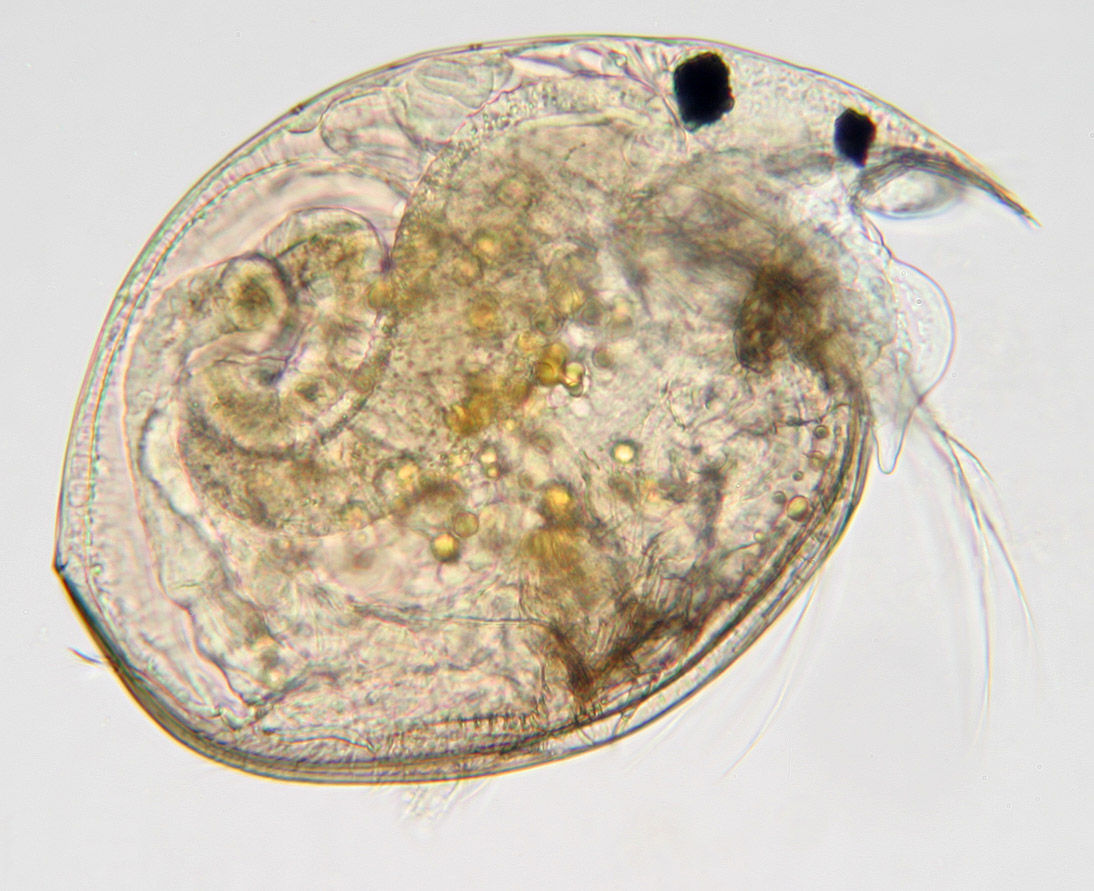Phylum Arthropoda
Subphylum Crustacea
Class Branchiopoda
Order Cladocera
Common names: cladocerans, water fleas
Overview
Cladocera, or water fleas, are small aquatic crustaceans. They typically have a very distinctive body plan with a two-valved carapace covering most of the body except the appendages. In some families, the carapace only covers the brood pouch area. There usually appears to be two body regions, a head and abdomen. The front of the head bears an unpaired compound eye, a result of two fused eyes, and, in most species, a simple naupliar eye. Typically, the first antennae (antennules) are reduced in size relative to the much more prominent second antennae. Most cladocerans use their antennae for swimming and catching food; others crawl using the antennae or other appendages. The carapace folds around the body with only the ventral and posterior edges open, giving a bivalved appearance. In females, there is a large space between the back and the dorsal side of the carapace that functions as a brood pouch. The carapace may terminate posteriorly with a tail-like spine. Inside the carapace, the body hangs mostly free, with anterior segments supporting four to six pairs of appendages. The posterior body region is devoid of appendages and usually terminates in a pair of spine- or claw-like caudal rami. The posterior body region is also the only part of the body that appears to be clearly segmented, and in total, cladocerans have 6 or fewer body segments. Cladocerans are typically quite small ranging from 0.5�3 mm (however one species reaches up to 18 mm in length) and range from pale and translucent to dark, almost black.
Distribution and diversity
Cladocerans commonly occur in a variety of freshwater habitats and are widely distributed throughout the world with around 400 described species. A few species are found in marine habitats. They inhabit a range of freshwater in Australia, including inland lakes, where 165 species in 53 genera have been described. Over 70 of these are endemic.
Life cycle
Many cladocerans have complex life-history strategies of cyclic parthenogenesis. This involves a long period of asexual reproduction where females hatch from eggs in spring and produce females throughout summer. Towards the end of the season, females start producing males resulting in a short phase of sexual reproduction. Nauplii (larvae) produced asexually are brooded by the female. Most of the larval development occurs in the brood pouch and when released by the female, they are relatively well developed. Sexually produced eggs are retained in the posterior carapace region and stay in the old exuvia (remains of the exoskeleton) when females moult. Sexual reproduction typically results in eggs that are dormant over winter and hatch the following spring. Cladoceran nauplii are relatively large and development into reproductive forms is rapid.
Feeding
Most cladocerans eat algae, bacteria, debris and micro-organisms employing a variety of feeding strategies including scavengers or scrapers, filter feeders and predators. Most freshwater pelagic cladocerans feed by filtering organic particles from the water. Water currents are created by the abdominal leg appendages, the anterior of which pass acuminated food particles to the mouth. Some species are selective in their feeding, preferring certain phytoplankton over others. Most freshwater benthic forms scrape particles from submerged surfaces. At least one species has been recorded as an external parasite of Hydra (Hydrozoa).
Ecology
Cladocerans commonly occur in a range of permanent freshwater habitats such as lakes, dams and ponds and are often very abundant, dominating the plankton found in these habitats. Some species also occur in marine habitats such as estuaries and oceans. Cladocerans typically fall into two categories: pelagic free-swimming forms, and benthic crawling forms. Pelagic forms typically swim in a head-up posture, using their antenna like ores. Benthic crawling forms use the abdominal posterior claws/rami, and anterior appendages to crawl on suitable surfaces in a head-first, horizontal manner. Cladocerans often modify their appearance in response to changes in their environment such as variations in temperature, nutrition and predation. As such, the appearance of con-specifics collected at the beginning, middle and end of the season may appear quite different. Cladocerans are important components of aquatic communities, both as herbivores eating algae and bacteria, and as major prey items for other invertebrates, fish and birds, particularly during summer when their populations can reach very high numbers. The most well-known genus Daphnia is commonly used to test the toxicity of chemicals and pollution in water and in understanding the environmental effects of human activities on lakes and wetlands.
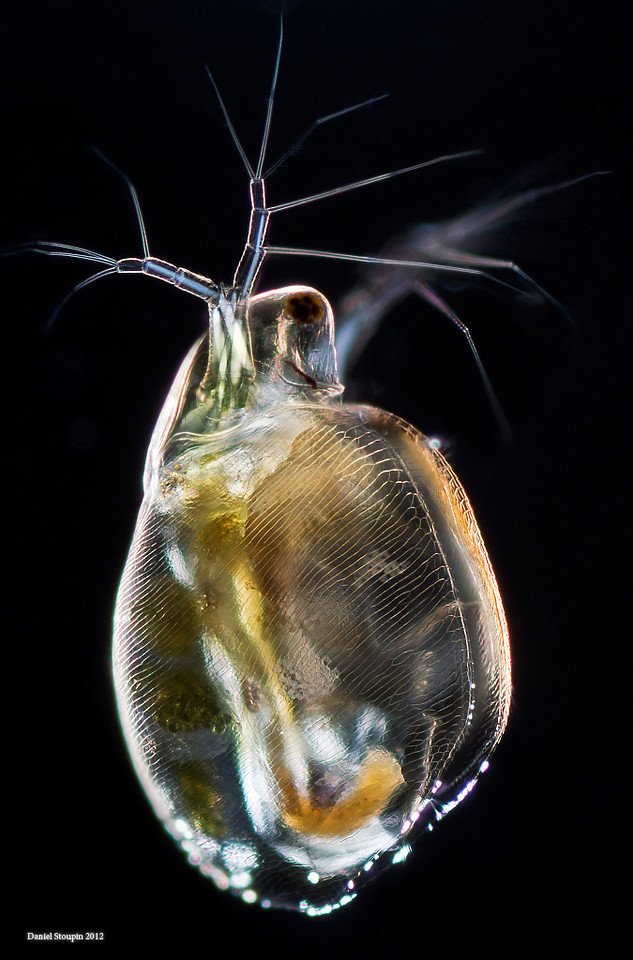
Simocephalus vetulus Image credit:
Daniel Stoupin MicroWorlds Photography, used with permission.
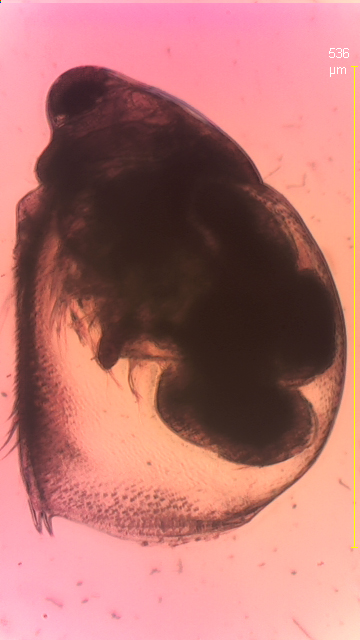
Scapholeberis kingi
Image credit: � Russell Shiel
used with permission
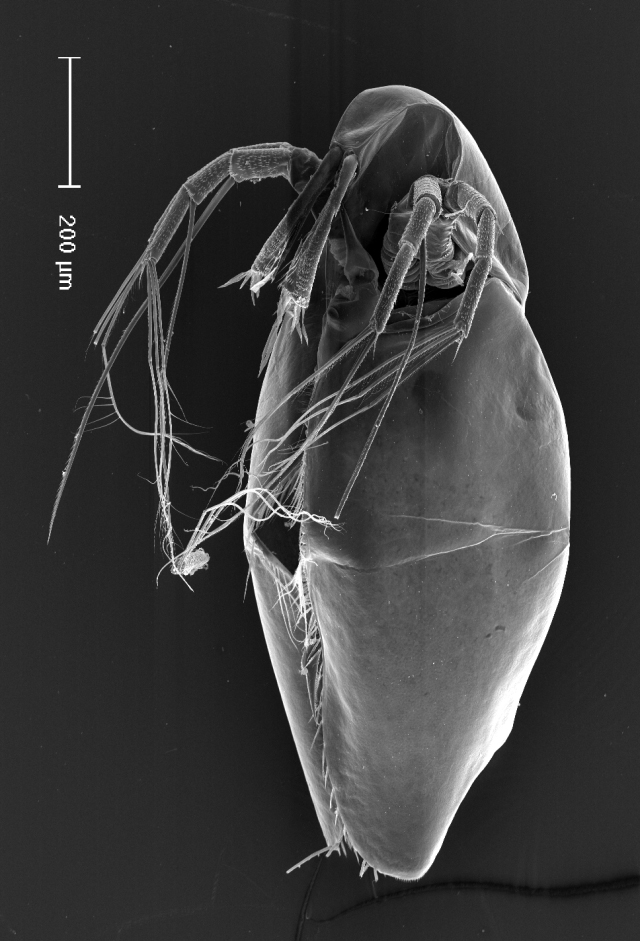
Gondwanothrix halsei
Image credit: � Russell Shiel
used with permission
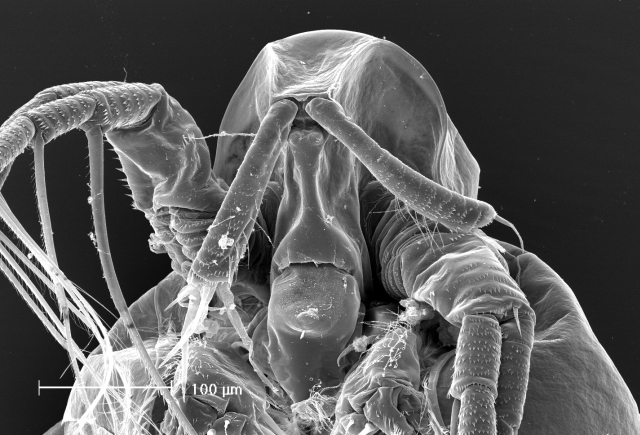
Gondwanothrix halsei
Image credit: � Russell Shiel
used with permission
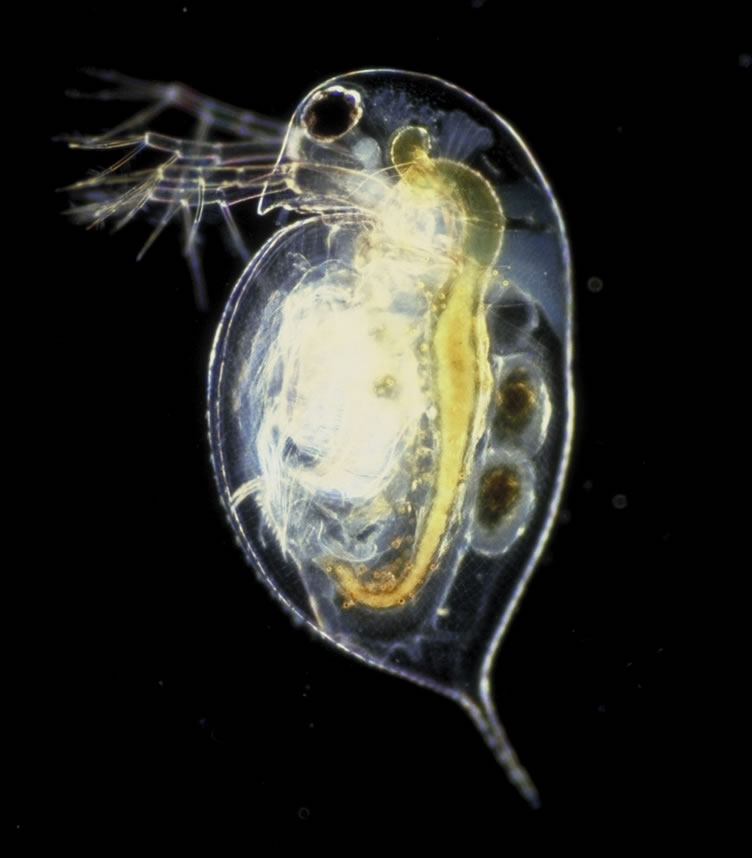
Daphnia pulex Image credit: Paul Hebert, published in: Gewin V. (2005)
Functional genomics thickens the biological plot.
PLoS Biology doi:10.1371/journal.pbio.0030219,
used under a
Creative Commons Attribution license

